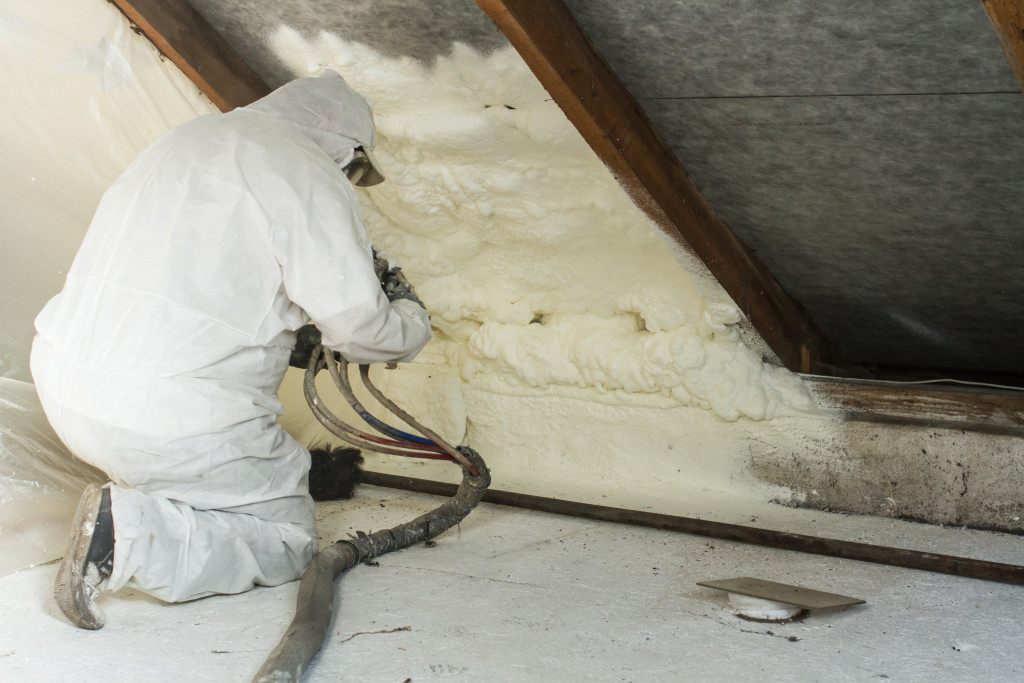Many people find themselves having to turn up the heat to keep their homes warm and comfortable during cold weather. This can lead to higher utility bills which can be frustrating if you are already on a tight budget.
Fortunately, there are some things that homeowners can do to reduce energy costs and stay warm throughout the winter months without having to spend a fortune on utilities! Let’s take a look at some of these tips below:
Close your curtains and blinds to keep the heat inside
Close your curtains and blinds to limit heat loss. If you can, use curtains with a thermal lining so that the heat stays inside and doesn’t escape through the windows. Close them during daytime hours to help insulate your home if you have curtains.
Also, close your blinds during daytime hours, so the heat stays inside and doesn’t escape through the windows. You could also use drapes or window shades as an alternative. Keep curtains closed at night as well. This will keep the heat from the morning trapped indoors, so you won’t need to turn up the thermostat as much to stay warm during cold nights.
You can also use a thermal blanket to cover your windows at night. This will help keep the warm air in and the cold air out!
Add insulation in attics, walls, and ceilings
One way to improve the heating in your home during winter is by adding insulation. Home insulation helps keep heat in during the winter and keeps the cool air out during the summer. It can also help save on energy costs.
There are a few different types of insulation that you can add to your home—some of which are fiberglass, foam, cellulose, and rock wool. The most common type of insulation is fiberglass, which you can install in attics, walls, and ceilings.
Foam insulation is another popular type of insulation. Foam insulation comes in various forms, such as spray foam, rigid foam, and extruded polystyrene foam.
Cellulose insulation is made from recycled products such as paper and plastic bottles, making it eco-friendly. Rock wool insulation is made from stone and volcanic rock and can be used in residential and commercial buildings.
You can add the insulation yourself or have a residential spray foam contractor handle it to ensure that nothing gets missed and you get the insulation applied properly.

Install a programmable thermostat
Installing a programmable thermostat is a great way to save on energy costs during the winter. You can set a programmable thermostat to lower the temperature at night or when you’re not home, which can help reduce your energy usage and save you money on your heating bill.
Most programmable thermostats come with a pre-set schedule, but you can also customize it to fit your needs. There are various types of programmable thermostats available—from basic models that are inexpensive and easy to use to high-end models with more features.
If you’re not sure how to install a programmable thermostat or if you need help setting it up, you can contact an HVAC professional to install it for you.
Install energy-efficient windows
Installing energy-efficient windows is another easy way to help keep the heat in during winter and allow cool air in during summer. Energy-efficient windows can also help reduce cooling costs by up to 20%.
There are different types of energy-efficient windows available on the market, so it’s important to do your research and find the best windows for your home.
Seal up any cracks or leaks around windows and doors with caulk or weather stripping
One quick and easy way to improve the heating in your home during winter is by sealing up any cracks or leaks around windows and doors. Warm air goes into your home from these areas when it’s cold outside, so making sure they’re tightly sealed will help keep your home warm. Pay attention to any pipes or wiring running through a crack in the wall—these can be a source of air seeping into your home as well!
You can also use a sealant or spray foam insulation, which can be used to fill in any gaps around windows and doors.
In addition, installing weather stripping on windows will help reduce the amount of cool air that escapes from them during summer.
Clean out your fireplace to remove soot
Cleaning the fireplace can help keep the house warm during winter. When the fireplace is dirty, soot and ashes can build up and block the heat from escaping. This can make your furnace work harder to keep the house warm, leading to increased energy costs.
Cleaning the fireplace is a quick and easy way to improve the heating in your home and save on energy costs. All you need is a broom, dustpan, and vacuum cleaner. First, remove the soot and ashes from the fireplace with a broom and dustpan. Then, vacuum up any remaining debris.
If you have a gas fireplace, it’s important to have it cleaned by a professional at least once a year. Carbon monoxide can build up if the fireplace is not cleaned correctly and can be dangerous for you and your family.
Keeping your home comfortable during the winter with these easy-to-do tips is a great way to stay warm and save money. Soon, you’ll be able to enjoy a cozy home without spending a lot of money on energy bills. Try out these tips and see how much of a difference they can make for you.
